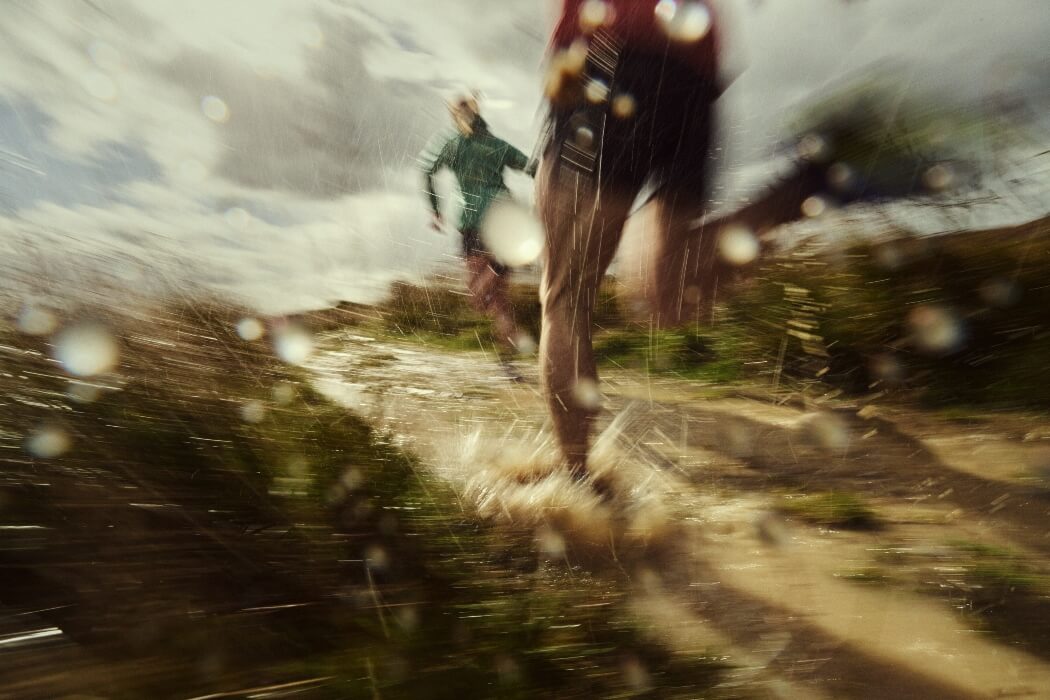
If you’re gearing up for your first ultra, the kit you’ll need to carry may be as daunting as the training you’ll need to do! Here we’ve put together a list of the common items you’ll need for an ultramarathon event.
Disclaimer: Although these items form the foundation of the usual kit you’ll need when running an ultra, the exact requirements can vary per event. Once you’ve decided on your first ultra, check the event’s website or email the organiser to ensure you have everything you need. Ultramarathon kit requirements can change close to the day too, depending on the weather forecast, so be sure to check in ahead of the day to see if there are any additional items you’ll need to carry.
LIGHTEN THE LOAD
Deciding on the kit you carry is a fine balance between taking what you need to stay safe during your event, while at the same time keeping things as light as possible. It’s easy to carry too much, and often beginner ultra-runners fall foul of that mistake. Equally not having the right kit or nutrition can result in your race descending into a miserable experience, or a DNF.
If in doubt it’s probably best to pack a little more than you need, especially if this is your first ultra. You can always refine your set-up over your first few events to discover what works for you.
One of the biggest areas to invest in is lightweight kit that’s packable. Yes, this tends to cost a bit more, but that investment will be worth it over the long run (pun intended).
TRAIN WITH YOUR PACK
Ahead of your event, it’s important to train with the full kit you intend to carry. This will help ensure you’ve:
- Got used to running distance with the weight you’ll be carrying during the race
- Optimised your set-up, making sure likely items are within reach
- Packed your pack in the most comfortable way
- Discovered any points where the pack might chafe
- Practiced stowing and removing poles
You can also use these runs to practice your hydration and nutrition strategy.
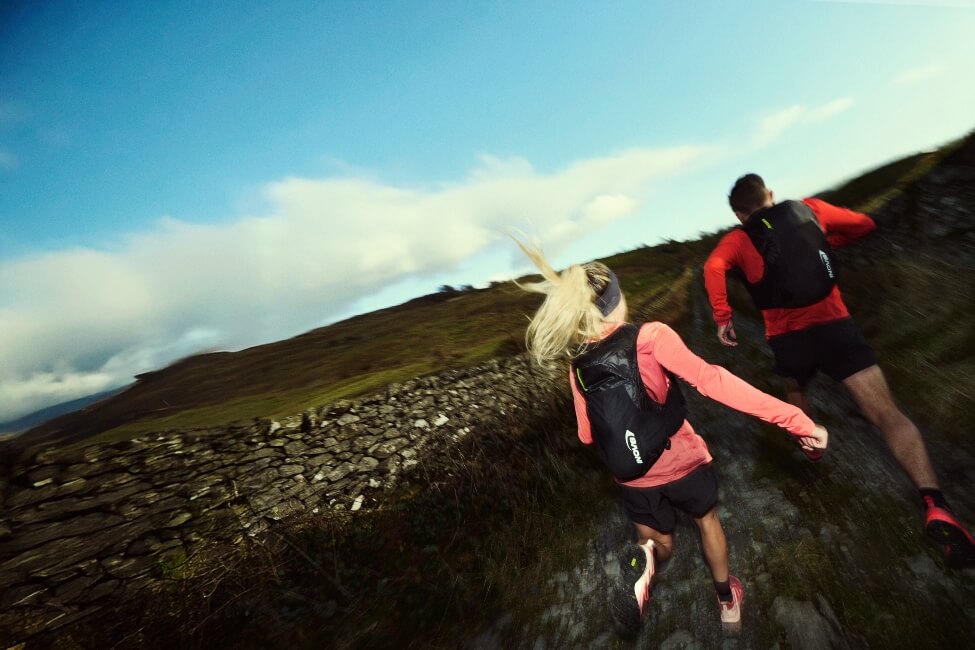
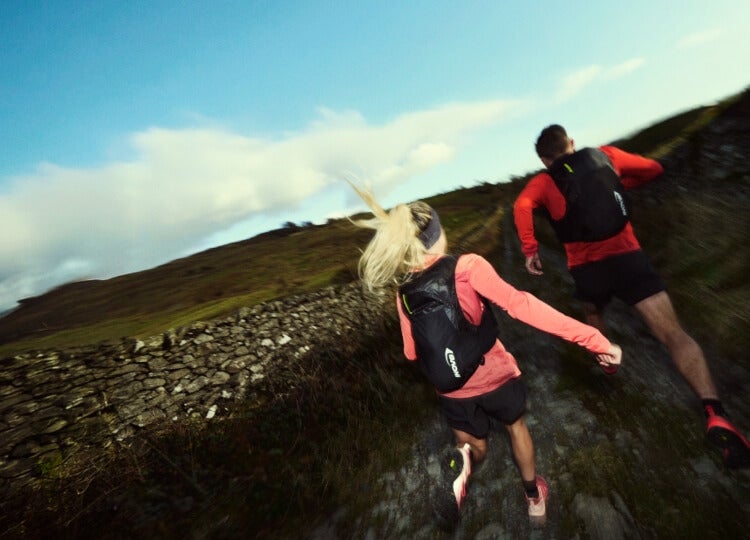
PACKS/RACE VESTS
A good place to start is the pack/vest that you’ll use to carry your gear.
Things to look out for when selecting a pack:
- Volume – how much can you carry? Is it enough for the distance you are attempting?
- Hydration – what are the options for hydration? Can you carry flasks, a reservoir, or both?
- Comfort and bounce – look for a pack that’s zero bounce and has a comfortable fit. You want it to be able to move with your body as you run, and not restrict you in any way.
- Pockets and pouches – what’s the storage like? Is there enough easy access storage for the things you’re likely to need during your race?
- Pole attachment – do you run with poles? Most race packs have a pole attachment, or pole attachment options.
SHOES
What terrain is your ultramarathon being run over? You want to make sure you are wearing shoes that have the best grip, but which also offer comfort over long distances.
At checkpoints you may be able to stash an alternative pair of runners in your drop bag, allowing you to change into a wider fitting pair as your feet swell, or into a pair that are more suitable for the terrain in next stage of your event.
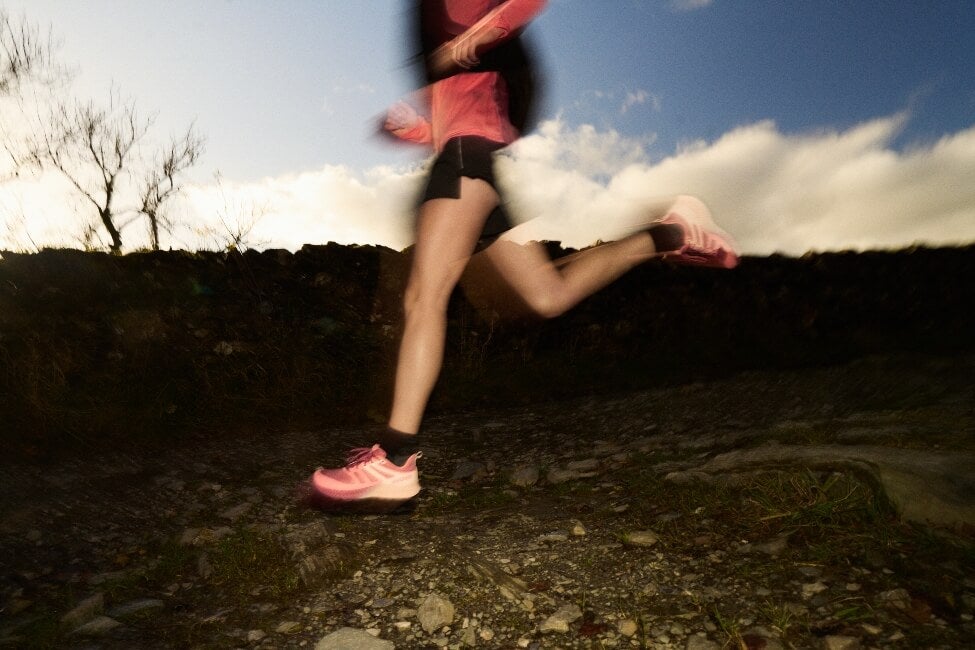
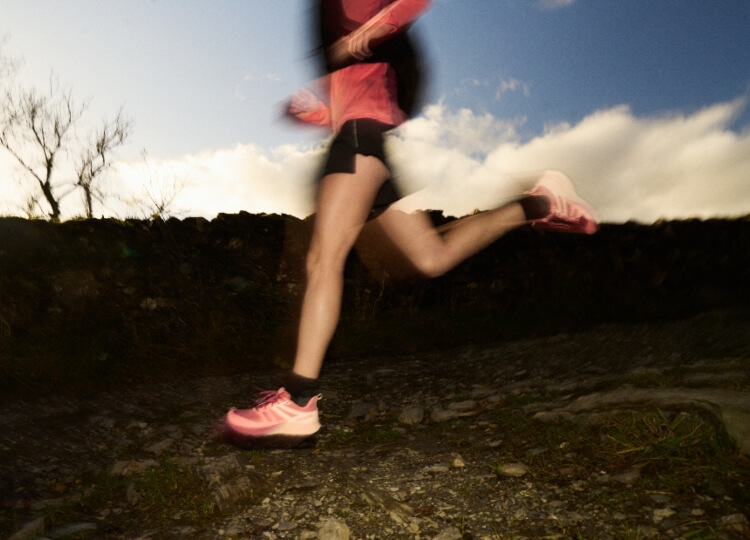
WATERPROOF JACKET & TROUSERS
Most ultramarathon events will require you to carry full waterproof cover – a jacket and trousers. These will need to be garments advertised as waterproof, and with fully taped seams. For waterproof running jackets you’ll likely need to ensure it has a hood too.
You’re carrying these items for a reason. If something goes wrong in the middle of nowhere you want waterproofs you can depend on. Again, it’s worth investing here in garments that are protective, lightweight and packable.
HAT & GLOVES
Protect your extremities with a warm pair of gloves or mittens. For winter ultras, a thin pair of gloves can be paired with a pair of waterproof overmitts to give you extra protection. A hat or snood should also be in your pack to protect you ears from the biting wind. For summer ultras, a peaked running cap is essential to keep you cool and protected.
SOCKS
The humble sock can make or break your race. Make sure you train in the socks you intend to wear, to ensure they don’t rub or cause blisters over longer runs. It’s good to have a spare pair of socks in your pack over longer sections, or spares in your drop bag at checkpoints.
CLOTHING
Look for lightweight, packable layers that you can add and remove easily according to the conditions. As a starting point you’ll need a lightweight base layer that can be worn on its own in warmer weather, or act as a moisture wicking base when layered on top of. Merino base layers are more insulating, so should be considered over synthetic it colder conditions.
Over your base layer look for insulating mid-layers. The goal of these is to trap some warm air to keep you comfortable, while still allowing some heat and moisture to escape.
At checkpoints it’s worth having a full change of clothes lined up – you never know what might rub, or whether you’ll end up chest deep in a bog! When at checkpoints a warm jacket or top is a must too.
HEAD TORCH
For longer ultras you’re likely to be spending a fair amount of time in the dark. Invest in a good head torch – for trail running you want minimum 400 lumens, but go for the brightest your budget can afford. Make sure you know the burn time (battery life) of your torch on different settings. It’s wise to carry spare batteries or even a spare head torch to ensure you’re not caught out.
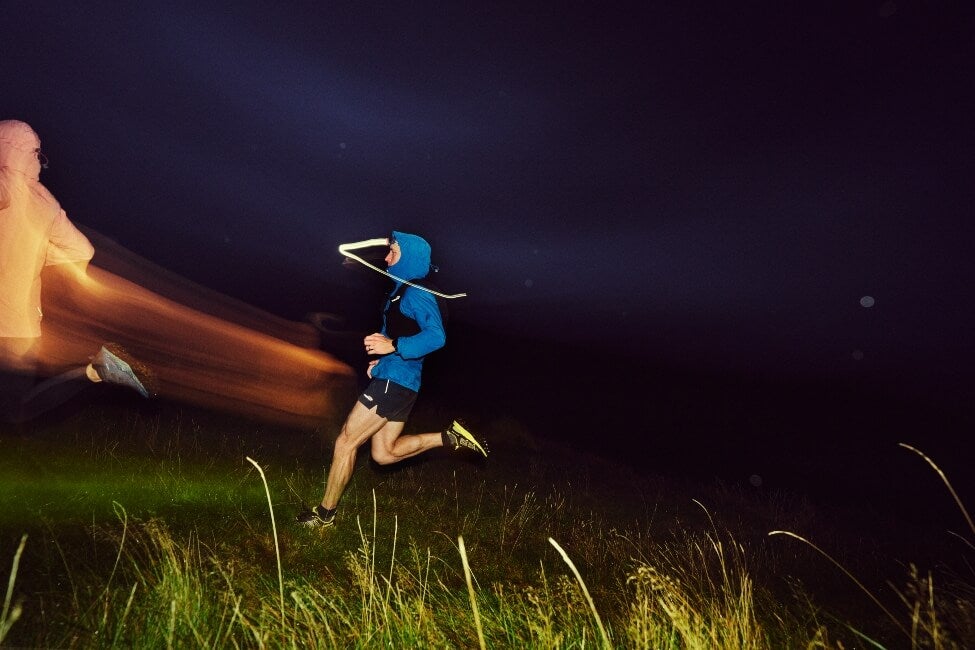
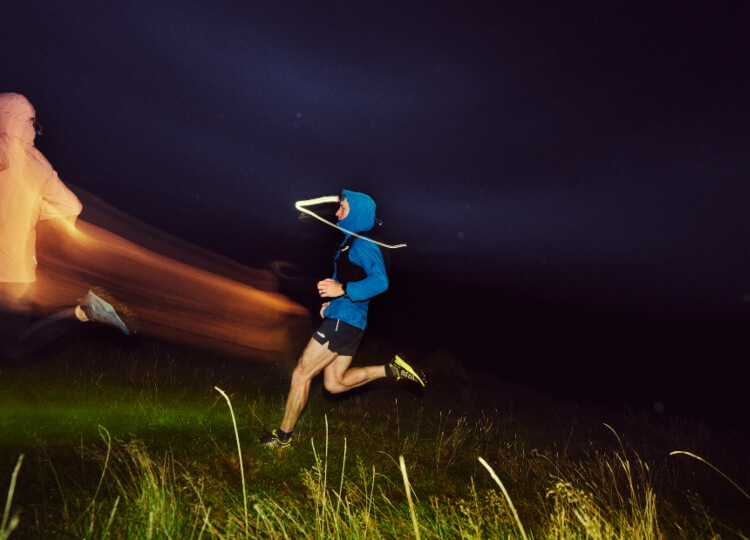
HYDRATION & NUTRITION
For longer events, what you put into your body can make all the difference to your performance. It’s even more crucial in the lead up to your event that you experiment with different products and practice taking them on board during your run.
Over shorter distances you can probably get away with a few gels to get you through your run. For an ultramarathon event however, you’ll likely need to eat proper food too.
Everyone is different, and what you fancy eating may change as you get further through the race. Ultras tend to have impressive buffets at checkpoints, but it’s also worth you adding a range of snack options to your drop bag too.
SAFETY & COMFORT
There are several items you may need to carry, or should consider carrying, to keep you safe and comfortable during your run:
- Map and compass – depending on your event, you may need to self-navigate sections of the course. Make sure you have a physical map and compass – and that you know how to use them! If possible, it’s a good idea to recce sections of the course that may be difficult to navigate beforehand. If you’re likely to be running at night, it’s worth factoring in a recce in the dark too.
- First aid kit – this is usually a mandatory requirement. A number of ready-made trail running first aid kits are available on the market – these usually include plasters, dressings and antibacterial wipes. To this you might want to consider adding blister plasters, spare nipple covers and small sachets of sun cream.
- Bivvy bag – when things go wrong, it can get cold very quickly. A good bivvy bag will help you retain body heat and attract attention from fellow competitors or rescuers.
- Whistle
- Fully charged mobile phone
- Money – in case you spot an ice cream van in the wilderness, or to help you get to the next checkpoint if you DNF.
- Toilet roll – when nature calls, you best have an answer! Small, pocket packs of tissues work well here if you’re caught short.
- Lube – having a small pot or tube of lube with you will allow you to address chafing hotspots before it feels like being attacked by a cheese grater.
POLES
It’s personal preference, but running poles can help you negotiate steep uphills, as well as technical rocky sections of the course. Practicing with your poles is essential so that they’re a help not a hindrance come race day. That includes knowing how to stow and remove your poles from you pack with a minimum of fuss. It may also be worth doing a recce of sections of the route where you’ll use poles and practicing on the course itself.

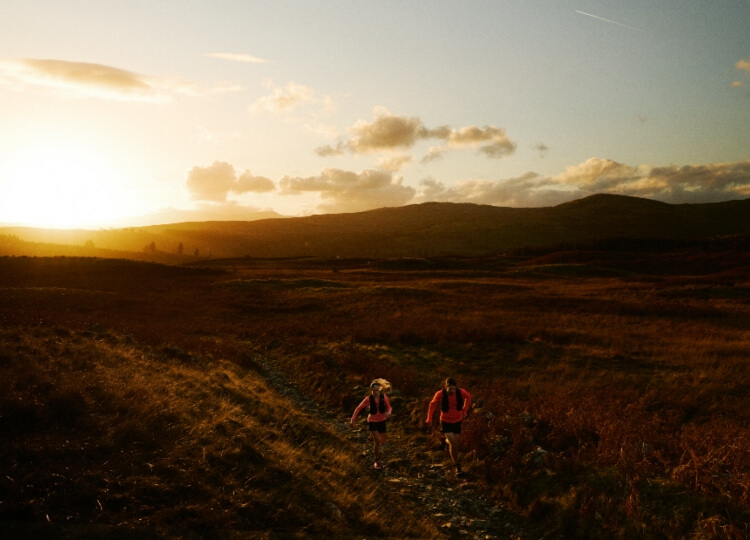
FINAL THOUGHTS
So there you have it, a comprehensive ultramarathon kit list to help you gear up for your first event.
To summarise:
- Try to strike the balance between weight and safety. If in doubt always err on the side of safety.
- Practice as much as possible with your full race day kit to iron out any niggles ahead of your event.
- Check with your race organiser for the specific kit requirements for the event you’re taking part in. Be aware that these requirements can change if extreme weather is forecast.
- It may take a few races to perfect your set-up, and that’s fine. It’s all part of learning the sport.
- Enjoy!
